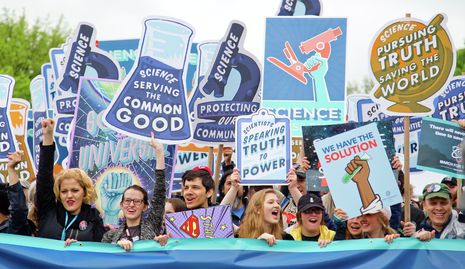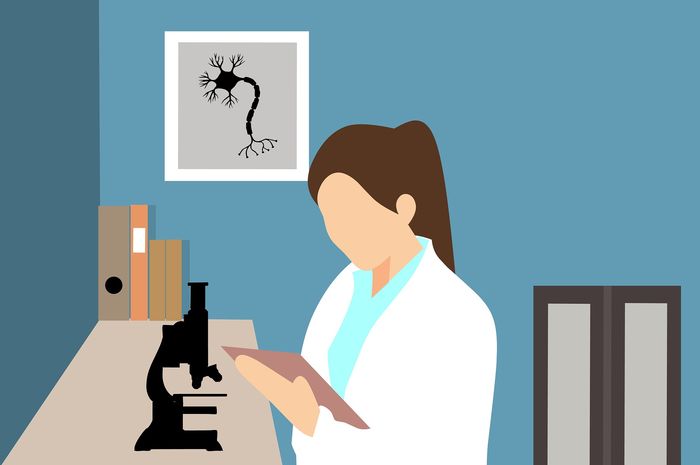Trust me, I’m a scientist: lessons from the pandemic on public attitudes towards science
Alicia Smith explores ‘science capital,’ social media, and the impact of the Covid-19 pandemic on public attitudes towards science

Sodium Lauryl Sulfate, Hydrated Silica, Sodium Fluoride. Do you know what they are? Would you put them in your mouth? What if I told you that you already do? Probably even twice a day. That’s because they are common ingredients in toothpaste. The chances are you only know these scientific terms if you are a specialist in oral hygiene or a toothpaste enthusiast. Every day we put our trust in science to satisfy our basic needs and improve our standards of living, and it is valued as a powerful and positive tool in society. But is our trust in science lost when it is not communicated effectively?
In the current global health crisis, scientific research and its role in decision making and policy change are at the forefront of public discussion and scrutiny. According to the UKRI, although the public has an overall positive attitude towards science and scientists, there is a gap in opinion between people of different social classes and educational groups. However, a 2019 government report indicated that this demographic pattern of mistrust was present before the pandemic began. So what are the causes of such a deep-rooted divide?
“Social media... has created a breeding ground for conspiracy theories, myths and fake news.”
The concept of “science capital” may go some way to explaining the gap in trust. Constructed as a tool to better understand why people might feel that science is or isn’t for them, high scores in science capital have also been positively correlated with positive views about science. The index was developed based on survey items that include science-related qualifications, knowledge, and informal science learning. Individuals who score poorly across the range of attributes tend to feel less connected with science.
Low capital may reflect insufficient science outreach rather than public disengagement, with nearly half of individuals agreeing that scientists put too little effort into informing the public. Despite variations in science capital, the global pandemic has been accompanied by a widespread increase in demand for scientific information. For many individuals, major broadcasters such as the BBC, ITV, Channel 4, and Sky, have consistently been the primary source of scientific information. However, a recent study found that younger people are increasingly obtaining health information from social media. This increased news consumption has been accompanied by what the World Health Organisation (WHO) has described as a massive “infodemic” – the rapid spread of misinformation causing mass uncertainty.
While social media could be a force for good in rapidly deploying information, it has created a breeding ground for conspiracy theories, myths and fake news. Research suggests that there is a tendency for homophily within social media networks, where individuals group according to similarities such as age, religion, education and occupation. This has powerful implications for the information received within the social system and is likely to promote and reinforce attitudes that are hard to shift.
“Amidst the biggest health emergency of our time, scepticism in science could have grave consequences for public health.”
Recently, there has been renewed attention to public attitudes towards vaccines, with the WHO describing vaccine hesitancy as one of the top ten threats to global health. A recent report across 15 countries revealed that only half of the people surveyed would be willing to receive the COVID-19 vaccine. Several factors drive the public’s mistrust and fuel anti-vaccine movements, including business and financial motives of the vaccine industry, the pressure on biomedical companies to fast-track testing and regulatory approval processes, and unsubstantiated health scares caused by misinformation. Social media giants have come under fire as a result of the eruption of conspiracy narratives.
But while fact-checkers try to discredit claims of a link between 5G masts and COVID-19, and that Vladimir Putin released 500 lions in Moscow to persuade residents to stay indoors, the state of indecision and hesitancy regarding the vaccine uptake cannot entirely be attributed to pervasive misinformation. Concerns regarding the safety and efficacy of the vaccine may indicate that communicators must translate technical information into messages non-expert audiences can interpret.
Over the pandemic, new initiatives have worked to break the fake news circuit and provide a more effective two-way dialogue on scientific issues. Researchers at UCL have been helping to inform the public by providing expert commentary on a range of issues, including what the new variant means for lockdown measures, why the impact of “long COVID” should be considered for students, and the psychology behind panic buying. Taking a different stance, influencers have harnessed the power of social media platforms to counter misinformation. While the WHO has taken to TikTok to reach wider audiences, social media influencers like Joe Rogan and Mark Rober have used their YouTube channels to educate the public around the epidemiology of the virus. The use of social media to communicate messages in comprehensible and humorous ways demonstrates an opportunity to inform the public on scientific issues in a way that traditional sources of information often struggle to do.
Amidst the biggest health emergency of our time, scepticism in science could have grave consequences for public health. Yet the mistrust that is prominent now more than ever may be a symptom of a more inherent problem. With a growing generation glued to their screens, maybe the answer is right before our eyes.
 News / Cambridge bus strikes continue into new year16 January 2026
News / Cambridge bus strikes continue into new year16 January 2026 News / Uni members slam ‘totalitarian’ recommendation to stop vet course 15 January 2026
News / Uni members slam ‘totalitarian’ recommendation to stop vet course 15 January 2026 Science / Why smart students keep failing to quit smoking15 January 2026
Science / Why smart students keep failing to quit smoking15 January 2026 Interviews / The Cambridge Cupid: what’s the secret to a great date?14 January 2026
Interviews / The Cambridge Cupid: what’s the secret to a great date?14 January 2026 Comment / Will the town and gown divide ever truly be resolved?12 January 2026
Comment / Will the town and gown divide ever truly be resolved?12 January 2026









